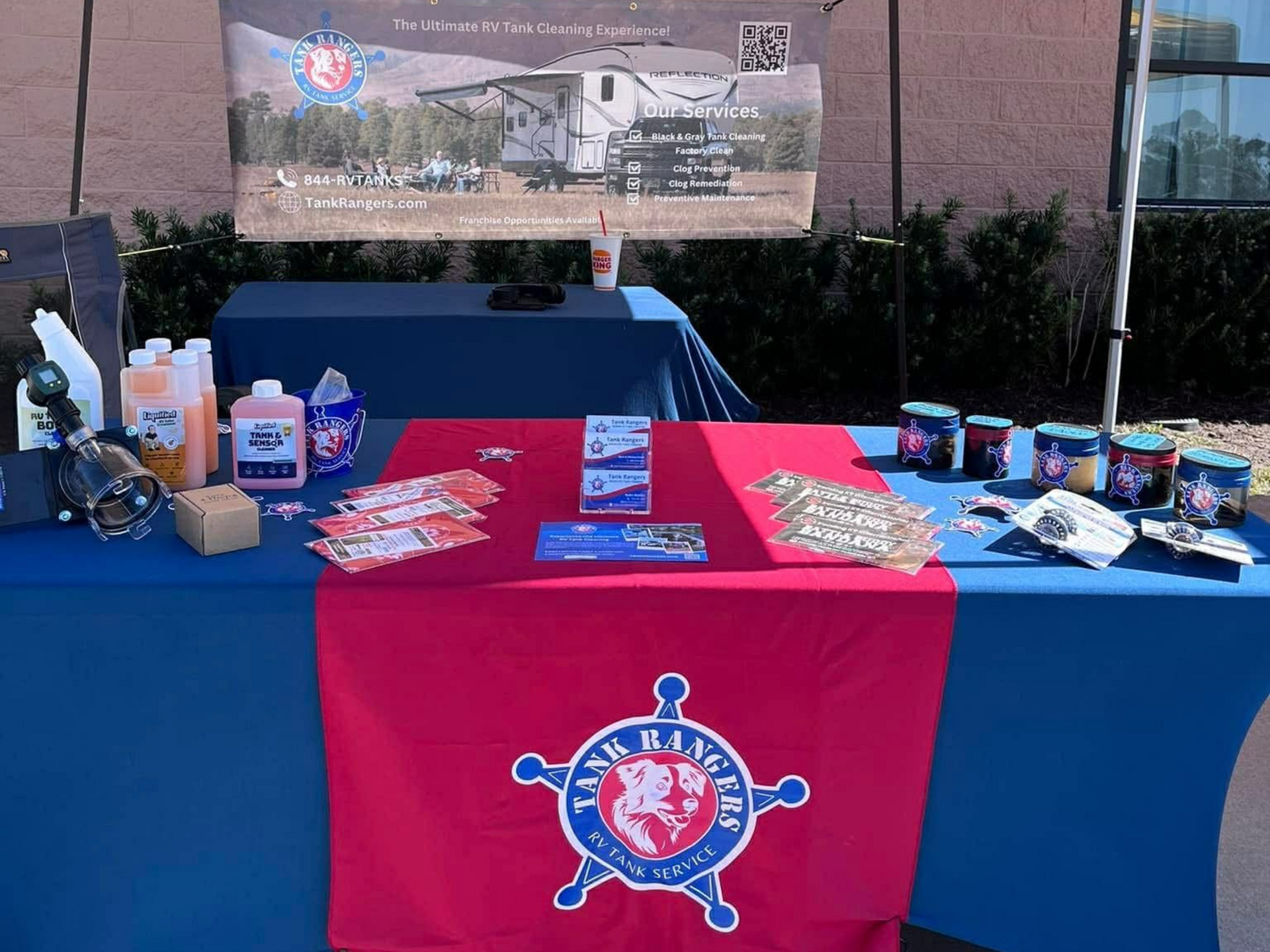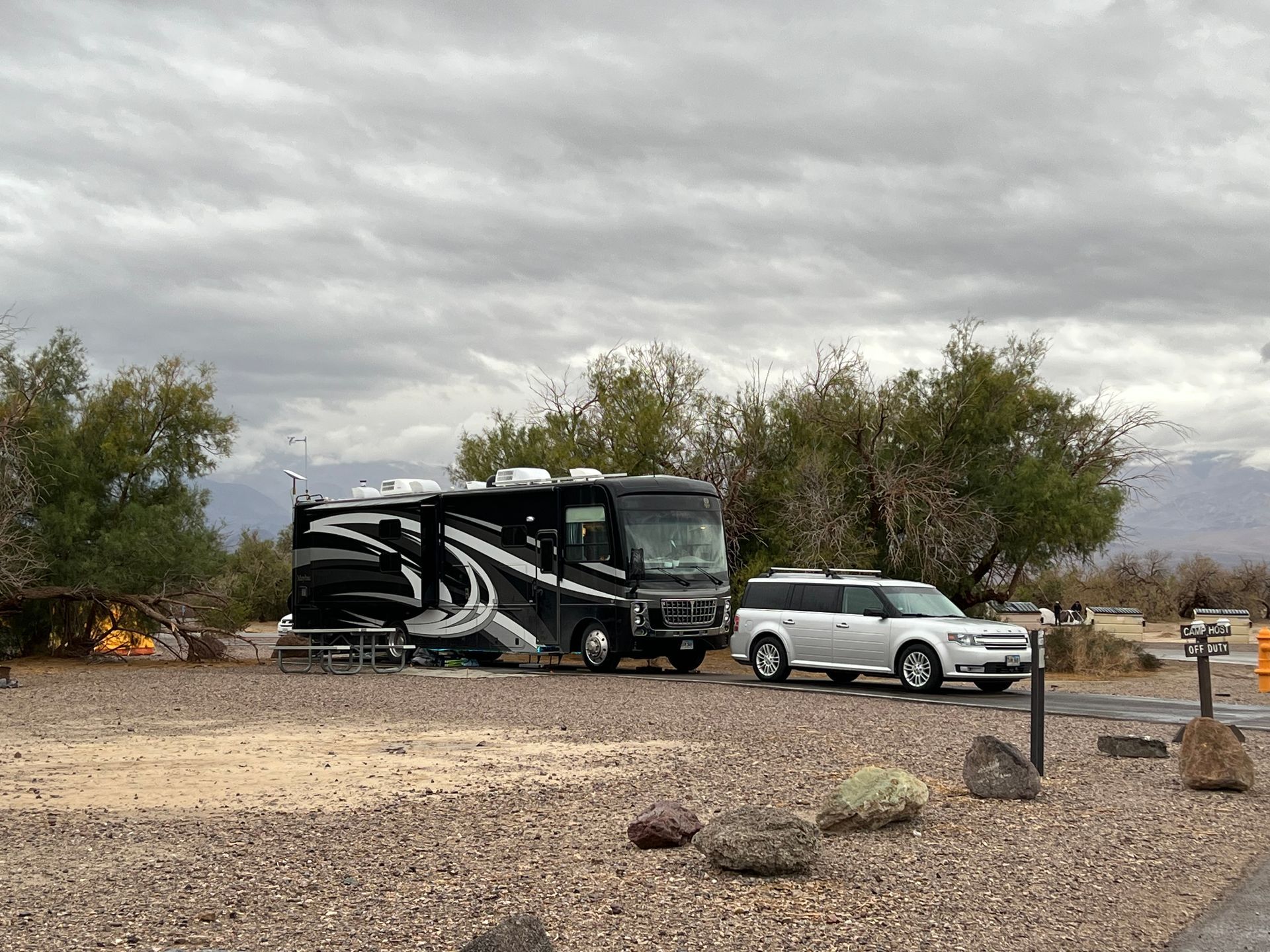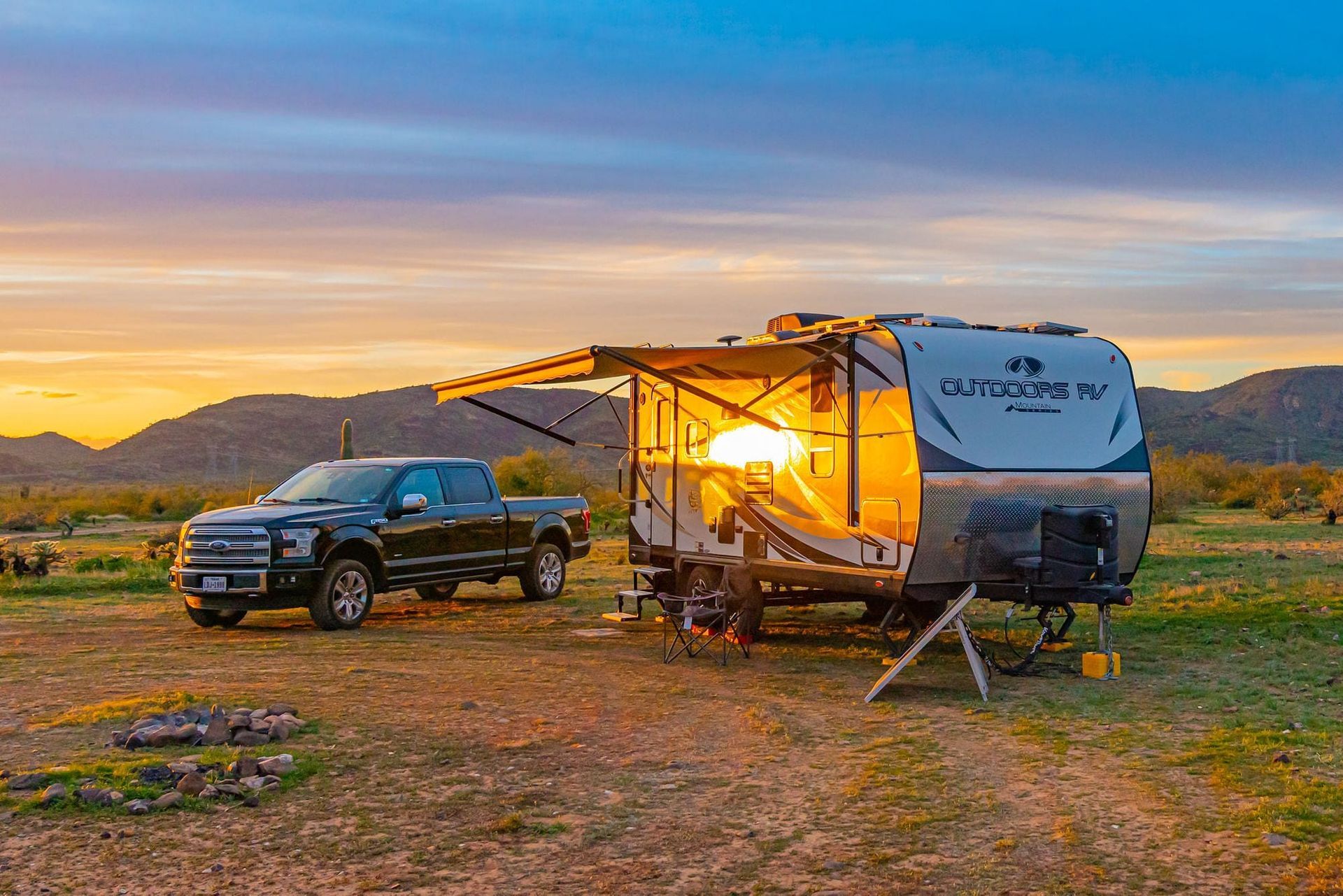Weighing Your RV at a Truck Stop
April 6, 2025
Are you ready to hit the open road with your RV but unsure about its weight? Weighing your RV at a truck stop is a crucial step in ensuring a safe and enjoyable journey! At Learn to RV, we guide you through the process, making it simple and stress-free. Knowing your RV's weight helps with proper loading and maintaining appropriate tire pressure, so you can travel confidently. Let us help you get the most out of your adventures on wheels!
For those who have weighed in the past, you’ll find that with the Weigh My Truck app , it’s even more convenient as you don’t have to run inside to get your weight slips. The results just show on the screen and also get emailed to you.
Weigh My Truck App
You’ll want do these steps before you get to the scale. Get everything setup and ready to go and your weighing process will be quick and easy!
First things first, go install the app.
Next, use the app and walk through the creation of your account and setup the app with credit card details. For company, I just put “Private”.
Fuel Up
Top up the gas or diesel in your vehicle. Truthfully, I don’t often embark on a trip thinking, “I’m going to weigh this time.” I am usually filling up and see that the truck spots are easy to get parked in and decide, “Hey, I should weigh today!”
Get Weighed
The process slightly varies based on what type of rig you’re in. Motorhomes have it the easiest as they really only have a single weight to take; travel trailers have it the worst as I suggest doing 3 weighings for them; and fifth wheels have to do 2.
Weighing is fairly inexpensive, usually $11-13 for the first weighing and $2-3 for each additional after that within 24 hours, though I strongly suggest you do all weighs at the same time so that nothing changes that can throw off your results.
Motorhomes & Truck campers
For all types of motorhomes (class A, class B, class C, super C) and truck campers, you really only need to take a single weight. You’ll pull up onto the scale where your window is about in line with the call intercom. This should align your front wheels on the first scale, your rear wheels on the next one, and your tow vehicle on the third. It doesn’t hurt to jump out and confirm.
Use the app to capture the weight (see video for the first set of screenshots).
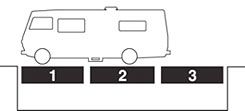
Evaluating Motorhome & Truck Camper Results
Once you have your weights, pull off the scale and you can compare them against the ratings for your RV:
- Add the weight of the steer axle plus the drive axle together and get your rig’s total weight. This should be lower than your gross vehicle weight rating ( GVWR ).
- Check the steer (aka front) axle is less than your front gross axle weight rating ( GAWR ).
- Check the drive (aka rear) axle is less than your rear gross axle weight rating ( GAWR ).
- If towing a car, check that the gross weight is less than your gross combined weight rating ( GCWR )
Travel Trailers
For weighing a travel trailer, you’ll pull onto the scale so that your driver’s window is about where the call box for the intercom is. You won’t use that with the app, but it’s a good alignment. This will leave you with the truck’s front wheels on one scale, the rear wheels on the next, and the trailer’s wheels on the third. Jump out and take a quick glance to make sure they’re lined up as you expect.

Travel trailers really only need 2 weights but I recommend doing all 3:
- Truck + trailer with weight distributing hitch (WDH) engaged
- Truck + trailer without weight distributing hitch (WDH) bars (just throw them in the truck bed)
- Truck only
I’m not sure if it’s rules or etiquette, but pull off of the scale between weights to make changes. That way you’re not blocking someone else who might pull in and won’t get called by the weigh master over the intercom.
I use a truck parking spot. One time I didn’t as there were none available and I really wanted to weigh that day. I very quickly got a visit from security who growled at me for dropping my trailer off to the side and out of the way. He gave in and I got my weight, but he wasn’t pleased.
Evaluating Travel Trailer Results
Now, I said you really only need 2 weights… truthfully, #1 is optional and it’s only there to tell you how your weight distributing hitch (WDH) is performing. It’ll show you how much weight you’re restoring to the tow vehicle’s front axle.
First, plug all of your numbers into TowingPlanner.com to the Actual Weight Utility for Travel Trailers. Note, for single axle trailers you would only do weights #2 and #3.
Once you have your results, here’s what you want to look at:
- Compare the Gross Combined Weight against your tow vehicle’s gross combined weight rating ( GCWR )
- Compare the Truck Weight (hitched) against your tow vehicle’s gross vehicle weight rating ( GVWR )
- Compare the Camper Weight against your trailer’s gross vehicle weight rating ( GVWR )
- Check the Tongue Weight is less than the tow vehicle’s hitch’s maximum tongue weight.
- Check that the Tongue Weight Percentage is above 10% (less than that can induce sway !)
- In weight #1, compare the Steer Axle against the tow vehicle’s front gross axle weight rating ( GAWR )
- In weight #1, compare the Drive Axle against the tow vehicle’s rear gross axle weight rating ( GAWR )
- In weight #1 also compare the Drive Axle against the sum of the tow vehicle’s rear tires’ maximum load carrying capacity (it’s printed in small black letters on the side of the tire, written as “Max Load XYZ lbs. at ABC psi”)
- In weight #1, compare the Trailer Axle against the sum of the trailer’s gross axle weight ratings ( GAWR )
- In weights #1 and #3, compare the Steer Axle difference. Check the owners manuals of the weight distributing hitch (WDH) and your tow vehicle to make sure this is within spec.
Fifth Wheels
With weighing your fifth wheel, you’ll pull up onto the scale so that your driver’s side window is about lined up with the call box with the intercom on it. Fortunately with the app, you don’t need to use it (because it took standing on the running boards and STRETCHING). But this aligns your truck’s front wheels on one scale, rear wheels on the next, and the trailer’s axle(s) on the third. Pop your head out to make sure it’s all lined up before proceeding in the app.
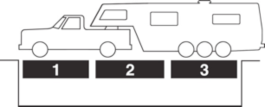
Fifth wheel owners have it a little easier than travel trailers as they truly only need 2 weighings:
- Truck + trailer
- Truck only
See the video at the top of this post for the whole process for fifth wheels. You’ll notice that I do the truck only weighing first, that’s because I wanted to take care of the hardest part first and that’s getting parked in a tractor trailer parking spot.
Evaluating Fifth Wheel Results
Take your weights and plug them into the Fifth Wheel Weights Actual Calculator on TowingPlanner.com.
Once you have your results, here’s what you want to look at:
- Compare the Gross Combined Weight against your truck’s gross combined weight rating ( GCWR )
- Compare the Truck Weight (hitched) against your truck’s gross vehicle weight rating ( GVWR )
- Compare the Camper Weight against your trailer’s gross vehicle weight rating ( GVWR )
- Check the Pin Weight is less than the fifth wheel hitch’s maximum pin weight (also sometimes known at “vertical tongue weight”).
- In weight #1, compare the Steer Axle against the truck’s front gross axle weight rating ( GAWR )
- In weight #1, compare the Drive Axle against the truck’s rear gross axle weight rating ( GAWR )
- In weight #1 also compare the Drive Axle against the sum of the truck’s rear tires’ maximum load carrying capacity (it’s printed in small black letters on the side of the tire, written as “Max Load XYZ lbs. at ABC psi”)
- In weight #1, compare the Trailer Axle against the sum of the trailer’s gross axle weight ratings ( GAWR )
Thanks for reading and I hope this has been helpful.
Comment below if you have weighed or have any questions about the process!
Other blogs you might like...

